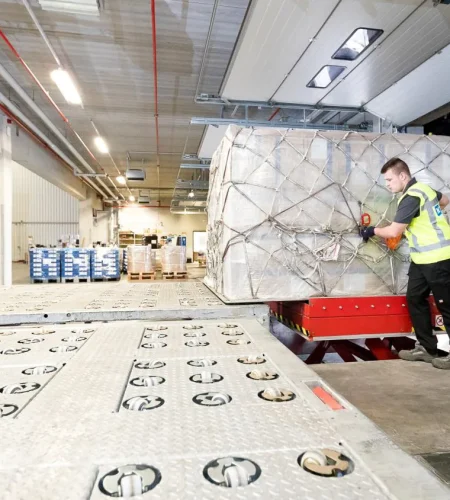Volume calculator
Calculate directly!
The volumetric (or dimensional) weight reflects the density of your shipment. A less dense shipment takes up more space relative to its weight. Use our calculator to easily determine the volumetric weight of your shipment.
- Enter the width, height, and depth of your shipment.
- Our calculator will instantly calculate the volumetric weight in kilograms.
We calculate the volumetric weight for every shipment and compare it to the actual weight in kilograms.
"*" geeft vereiste velden aan
* For all modalities, other variables can also influence the final calculation
Volumetric Weight
What is volumetric weight? Volumetric weight is a calculation that indicates the relationship between space and weight. Less dense shipments create more volume compared to their actual weight. Carriers use this to determine which weight is greater: the volumetric weight or the actual weight.
What is it used for?
Volumetric weight provides insight into the space your shipment occupies in relation to its density. It is used to determine the greater of the two weight categories:
- The actual weight
- The volumetric weight
The higher weight is often used as the basis for further processing.

FAQ
1,000 kg of springs has a larger volume than 1,000 kg of lead. In order to be able to charge this difference equally, certain conversion factors have been agreed upon within the transport sector.
For each shipment we calculate the volume weight and compare it to the actual weight in kilos. We make this calculation using an approved formula. With air freight, 1 cbm (cubic metre) equals 167 kg. With sea freight (LCL) 1 cbm equals a maximum of 1000 kg, whereas with road transport 1 cbm equals 333 kg. The highest weight (volume or actual) is charged.
We calculate the final shipping costs on the basis of the higher of the two ‘weights’: this is the ‘chargeable weight’. If goods take up ‘too much’ space (e.g. large, bulky products), we therefore calculate with the volume weight in most cases.
In road transport, we often calculate with loading metres. 1 load metre equals 1 linear metre of loading space in the lorry. This is often used as a unit of calculation for goods that cannot be stacked or on which you cannot stack. In this way, the trucker compensates, as it were, for lost space. Usually, 1 loading metre corresponds to 1,750 kg. When using pallets, you can also convert to load metres: 1 euro pallet (80×120 cm) is 0.4 load metres and 1 block pallet (100×120 cm) is 0.5 load metres.
With sea freight, you can opt for a full container, but also for a so-called LCL shipment. In that case we load several LCL shipments from different owners into 1 container. In this case, you pay for the space used in the container. Here we calculate with the Size/Weight (M/W) method: per cubic meter (‘size’) or per ton (‘weight’). So basically the same as the loadable weight, but with a different name.
